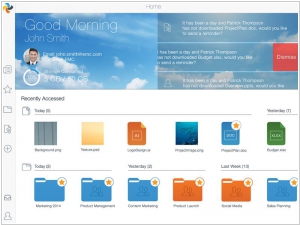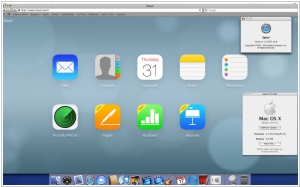Syncplicity vs iCloud
August 26, 2023 | Author: Michael Stromann
Syncplicity and iCloud are both cloud storage services that offer users the convenience of storing and accessing their files across multiple devices. However, there are notable differences between the two platforms. Syncplicity is primarily focused on business and enterprise users, providing robust file syncing and sharing capabilities, advanced security features, and seamless integration with popular productivity tools. It offers features like centralized administration, advanced collaboration options, and granular access controls, making it a suitable choice for organizations with complex data management needs. In contrast, iCloud is an Apple-centric service that seamlessly synchronizes files, photos, and app data across Apple devices. It provides features like device backups, easy sharing with other Apple users, and tight integration with Apple's ecosystem of services.
See also: Top 10 Cloud Storages
See also: Top 10 Cloud Storages
Syncplicity vs iCloud in our news:
2023. Apple revamps iCloud.com with more features for drive, mail and notes
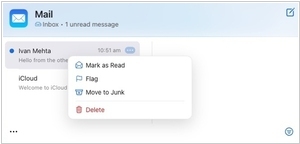
Apple has introduced a revamped version of iCloud.com, enhancing its functionality for PC users. The redesigned website offers support for browser notifications for Mail and Calendar, allowing users to receive alerts directly on their PCs. Additionally, the homepage is now customizable, enabling users to take quick actions like downloading files, deleting emails, marking tasks as unread, and more. This update builds upon last year's redesign, which included quick-glance widgets for apps like Notes and Pages. Furthermore, iCloud.com now enables users to insert links from one note into another, akin to iOS 17, enhancing the overall user experience and productivity on the platform.
2014. EMC Syncplicity cuts prices
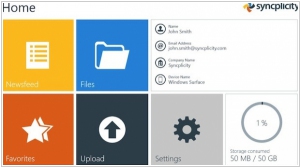
According to industry leaders Forrester and Gartner, EMC's Syncplicity is regarded as the top-notch offering in the Enterprise Sync and Share market. However, EMC aims to eliminate any potential barriers that may prevent companies from fully embracing its comprehensive solution. As part of this effort, EMC has increased storage limits across all its offerings. Individuals with free personal accounts can now enjoy storage capacity of up to 10 GB without incurring any charges. Subscribers to the business edition have a generous allocation of 300 GB + 5 GB per user, with the option to obtain additional storage at a reasonable price. Users of the departmental edition are granted up to 1 TB of storage without incurring extra fees. Furthermore, the storage capacity for the Enterprise edition remains unlimited, as it has always been.
2014. Syncplicity launches iPhone app expanding virtual private cloud capabilities
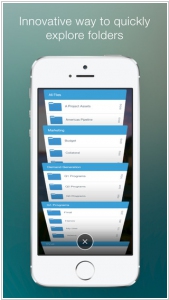
The cloud-based file management service, Syncplicity, has recently launched a new iPhone app that offers mobile accessibility to all user files and folders. This app not only provides convenient access but also fulfills crucial business requirements such as security, backup, and versioning. Users can now effortlessly browse, share, and manage their files and folders directly from their iPhones, regardless of whether the files are stored on their PC, Mac, SharePoint servers, corporate network, or in Google Docs. This universal file access on the iPhone encompasses shared Syncplicity folders designed for collaboration within businesses or for personal sharing. With Syncplicity, users can securely access any file and folder at any time, eliminating the need to rely on email attachments or carry laptops and use VPNs to ensure file access while on the move. Syncplicity also prioritizes mobile safety by incorporating built-in policy and permission controls, remote wipe capabilities, and comprehensive end-to-end encryption for all transferred and stored data on the Syncplicity service as well as on the mobile device.
2014. Apple iCloud to get folders with files, Windows app
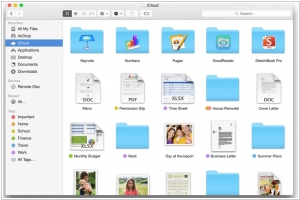
Cloud file storage and sync service iCloud is not well-received among Apple enthusiasts for several reasons. Firstly, it exclusively syncs internal app files, preventing users from accessing them outside these apps. Secondly, its pricing is considered expensive ($20 for 20GB), making it a luxury only affordable for Dropbox. Thirdly, it solely functions on Apple devices, even frustrating Apple fanatics who desire more openness. To address these concerns, Apple has introduced an update to the service, now known as iCloud Drive. This revamped version operates similarly to Dropbox, allowing synchronization of any folders with any files. Additionally, it will offer a client for Windows in addition to the existing Mac and iOS apps. Furthermore, Apple has reduced the pricing, starting from $0.99 per month for 20 GB, and a free storage tier of 5 GB will also be available. These improvements are slated to launch in the upcoming fall alongside the release of the new iOS 8 and OSX Yosemite.
2013. Apple launches iWork for iCloud
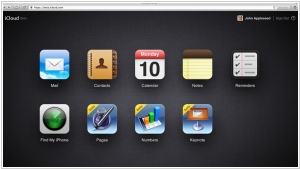
In terms of business applications, Apple has historically shown less interest, but it recognizes the significance of Office as an essential component of its platform. Competitors such as Microsoft and Google have taken significant strides in this area, surpassing Apple. To address this, Apple made a move to rectify the main drawback of its office suite, which was the absence of an online version. During the WWDC conference in June, Apple officially unveiled iWork for iCloud, making the online applications Pages, Numbers, and Keynote accessible to all through iCloud online accounts (currently in beta). However, these editors currently have limitations that may only appeal to users of MS Office and Google Docs. For instance, the text editor Pages lacks the ability to add tables, and spell check functions are only available in English. Collaboration tools are also absent. On a positive note, users can upload and edit MS Word, Excel, and PowerPoint documents, with formatting being preserved in some cases. Additionally, documents can be downloaded in MS Office formats and PDF.
2012. EMC buys file syncing service Syncplicity
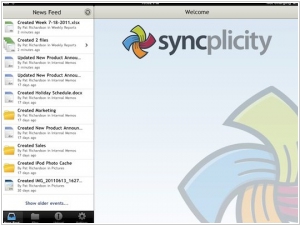
The conquest of the Enterprise continues for Dropbox for Business. EMC, the developer of the largest and most intricate enterprise content management system Documentum, has recently acquired Syncplicity, a small file storage and syncing service. This acquisition is expected to enable Documentum users to access and work with files stored in the ECM system from their mobile devices. It's worth noting that EMC has a subsidiary, VMWare, which is developing its own similar service called Project Octopus. However, it seems that EMC couldn't afford to wait any longer, as this matter required immediate attention. Interestingly, Open Text, the main competitor in the ECM market, had already launched a file syncing service called Tempo at the beginning of the year. Syncplicity, one of the early competitors of Dropbox, may not have achieved the same level of popularity, but it had a strong focus on the business sector and boasted more robust security features compared to Dropbox.
2011. Apple iCloud delighted SaaS vendors

As you may be aware, on Monday, Steve Jobs once again took the stage to unveil another groundbreaking innovation. This time, however, the focus shifted from small metallic devices to something larger and virtual: iCloud - the new cornerstone of Apple's strategy. From an enterprise perspective, iCloud may not be particularly captivating. Its primary function is to synchronize content and applications across all Apple devices (iPad, iPhone, Mac), thereby enhancing personal productivity. Nevertheless, the advent of iCloud has garnered enthusiastic responses from SaaS vendors such as Box.net, Zoho, and Salesforce. These vendors appear content that iCloud does not pose direct competition, as it exclusively caters to Apple devices and lacks collaborative features. However, iCloud's significance lies in the broader shift from desktop-centric computing to the Cloud, as emphasized by Steve Jobs himself. When Jobs asserts that the center of computing is no longer confined to the iPhone or iPad but resides in the cloud, people believe it, including those in the enterprise realm.
2008. Syncplicity Announces New Platform
Syncplicity, a synchronization, backup, and sharing solution, has unveiled a new open platform aimed at enabling the next generation of Cloud Computing applications. The platform empowers developers to seamlessly integrate their web-based applications with desktops, facilitating smooth interaction between online apps and locally stored files. By leveraging open standards, the platform enables file synchronization not only across computers and devices but also on the web. This means that desktop files can be instantly accessed in online or local applications, granting web apps the same versatility on the desktop. Additionally, files can be edited in any application, online or on the PC, and automatically backed up and saved directly to the user's hard drive. This eliminates the hassle of locating recently saved files and allows users to choose their preferred application without concerns about data storage. Syncplicity has also introduced a new pricing plan featuring free and premium accounts, along with partnerships with prominent web-based services for documents and photos, including Scribd, Zoho, and Picnik.
2008. Syncplicity Online Backup Opens Public Beta
Syncplicity is launching today with similar value propositions to SugarSync. It offers automatic file backup from any location on your computer, file synchronization between computers, and file sharing with friends. One of its standout features is the ability to sync Microsoft Office documents with Google Docs in both directions, unlike DocSyncer, which only pushes files to Google. Another player in the online storage space is Allmydata, a veteran company that recently revamped its backup product with version 3.0. While Allmydata has moved away from its peer-to-peer roots, it still offers a client for Mac and PC users to set up a virtual drive with unlimited storage for $5 per computer. Although primarily focused on personal backup, it does provide a web interface for accessing files on the go. Amidst the crowded market, with companies like Dropbox, HP Upline, Box.net, and Xdrive, one notable absence is Google. Despite long-standing rumors of the GDrive or "My Stuff," Google has yet to deliver a comprehensive online storage solution. However, if Google were to integrate file backup with its cloud software and provide appropriate APIs, it could revolutionize the Web 2.0 movement, drive adoption of its software and browser-based applications, and create new opportunities for startups.

